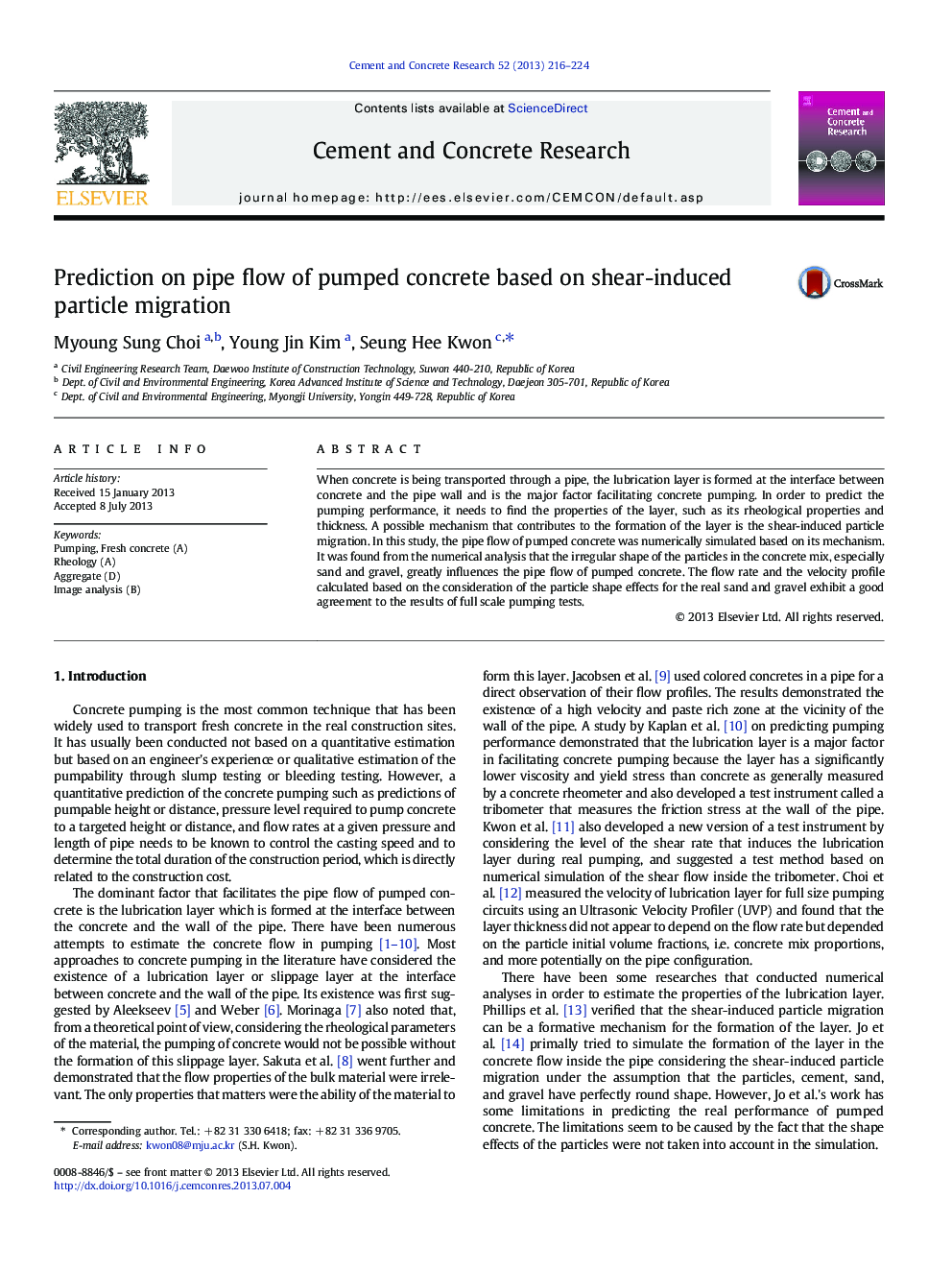| Article ID | Journal | Published Year | Pages | File Type |
|---|---|---|---|---|
| 1456387 | Cement and Concrete Research | 2013 | 9 Pages |
•The particle shape influences the rheological properties of lubrication layer.•The effects of particle shape can be represented by the intrinsic viscosity.•A method to estimate the intrinsic viscosity was suggested and verified.
When concrete is being transported through a pipe, the lubrication layer is formed at the interface between concrete and the pipe wall and is the major factor facilitating concrete pumping. In order to predict the pumping performance, it needs to find the properties of the layer, such as its rheological properties and thickness. A possible mechanism that contributes to the formation of the layer is the shear-induced particle migration. In this study, the pipe flow of pumped concrete was numerically simulated based on its mechanism. It was found from the numerical analysis that the irregular shape of the particles in the concrete mix, especially sand and gravel, greatly influences the pipe flow of pumped concrete. The flow rate and the velocity profile calculated based on the consideration of the particle shape effects for the real sand and gravel exhibit a good agreement to the results of full scale pumping tests.
